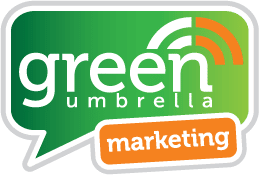First-Party Data is a Marketing Must-Have

First-Party Data is a Marketing Must-Have

When I wrote about the trends I was anticipating seeing this year, I talked about first-party data. This week alone I’ve seen a plethora of articles in support of this! So it makes sense to a take. closer look at the topic and share my thoughts with you!
What is first-party data in marketing?
It’s the stats, the data YOU have collected and hold on your customers and prospects. This is everything from addresses to birthdays and standard demographics, previous purchases, engagements with your brand, to interests and behaviours. This is the data we use as marketers to create content, produce and target paid advertising campaigns and design and plan our marketing around.
It’s the data that, for too long, we’ve all relied on third parties to collect and allow us to make use of!
Why has first-party data become important to marketers?
Google Ads, Facebook, LinkedIn… all paid forms of advertising are allowing you to use their data and right now, due to the fact we’re living in a privacy-first world, the opportunities to continue working in this way are being cut dramatically.
So what do I mean by a privacy-first world? Essentially I mean a world where you’re not being tracked without knowing about it! Your rights in terms of data protection are a priority, and the bad practices of data mining are essentially being made harder to implement and less and less accurate. This is, of course, a good thing when you think back to some of the data scandals of the last few years, Facebook’s Cambridge Analytica scandal, iOS data issues, Twitter’s data breach and then a host of political scandals whether it be voting in California or for Brexit!
The main changes we (marketers) have seen in support of this were firstly the introduction of GDPR across Europe (which has its equivalent in the US), Cookies (the little thingymagig that collects your data when you’re on a website that those annoying pop ups are using you to accept) are expected to no longer be supported by the end of 2023 on main browsers like Chrome and Safari. Facebook pixel… your once must-have marketing tool will essentially become obsolete if this all plays out!
Secondly the iOS updates we’ve seen over the last couple of years. That created some headaches when again, we were no longer able to track who clicked on what from where on their mobile devices. But that’s ok because at least we have Android data to hang our hats on! Well, until this week when Android announced they too are planning on removing tracking on their devices too!

So what now? How do we get around all of this?
As much as these changes are actually very positive from a personal use perspective, for marketers, this is a nightmare. A big old nightmare at that! We’ve got to change the way we’re working, strengthen what we have from a data perspective and design campaigns going forward that put us in the best position to implement data-driven campaigns that can be accurately measured!
We must rely on first-party data alone to ensure the success of our marketing campaigns. If we look at what some corporate entities are doing, there is a much to be done in order to prepare for the world ahead of us. Some of the activities are perhaps out of budget for us such as investing in ‘connected media’ and hiring for skillsets that can produce and analyse the data for us, or investing in data service providers that have strong machine learning and AI that can help remove the issues gaps in data might create. But, there are some practices that I believe all businesses can model irrelevant of their size.
From what I’m reading, here are my suggestions
- Use your CRM – what data are you holding that you can use to create targeted campaigns. They may be smaller scale but often, the more targeted you are the better your rate of success! What data do you need to collect so you can run campaigns in the future? Plan this, and implement it now!
- Benchmarking and testing now so you know what works today means you’ll have those learnings further down the line and you’ll be able to make educated assumptions if and when you see changes occur.
- Pay attention to industry conversation – what are the industry bodies discussing in terms of challenges and trends? These will educate your marketing messaging.
- Look for opportunities to work collaboratively and use pooled data to support your marketing efforts.
- Well… I’m not going to give away ALL my secrets am I?!
If you think data is a dull subject – you’re not wrong! But it is something that you need to wrap your head around marketing-wise to ensure success this year. I hope this helps give you some insight!

Christina Robinson is the Managing Director of Green Umbrella Marketing. She provides Social Media Training and Coaching for a range of clients throughout the UK.
Share this!

